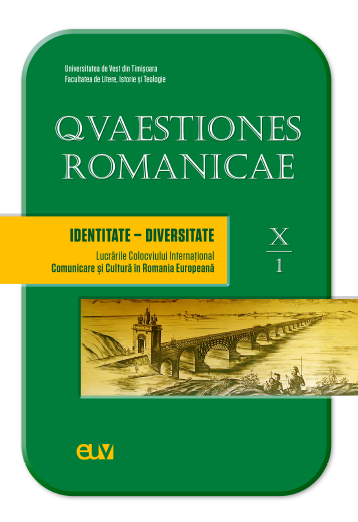Săptămâna luminată de Nicolae Brânzeu – prima operă românească de tip expresionist
Abstract: (The lit week by Nicolae Brânzeu – the first Romanian expressionist opera) Founded more than 420 years ago, this opera aimed to recreate a perfect blend of music, theatre and dance – the pillars of ancient Greek theatre – a desideratum that, in some respects, has persisted over the centuries. The Enlightened Week by Nicolae Branzeu, which, as we will demonstrate, happily brings together the constituent elements of total syncretic art, has a special place in the history of the Romanian opera. The work, structured as a one-part poem, capitalizes on the Wagnerian technique of infinite melody. The compositional language of Romanian musical expression is distinguished by the recitative vocal interventions (the arioso treatments are less common) and by giving the central role to the orchestra; it is the one that exposes the musical motifs, comments or supports the scaffolding of dramaturgy with a special sensitivity. The Enlightened Week is a place where human encounters the sacred and the heresy. The context outlines the discovery of new coordinates of the archetypal characters: the mother under the sign of a cleavage – life-giving and death liberator; the son – located between the abyss of human conscience and salvation; the old woman, stood out as a saviour, lost in revenge. The apotheosis predicted by the spectator is in total discord with the sonorous event that the composer ultimately validates. The present study outlines the panoply of leitmotifs, the harmonic work, the gradation of musical tensions and the role mapping, to provide a unitary projection of the author's identity matrix in the context of universal compositional diversity. The Enlightened Week anchors a reference chapter of the Romanian opera, and its value coordinates – captured by the interwar press – were also validated by George Enescu. A unique work in the Romanian genre creation, obscured by the maze of history.
Keywords: Branzeu, Romanian opera, unity, diversity, Expressionism.
Rezumat: Constituită acum mai bine de 420 de ani, opera își propunea să recreeze o îmbinare perfectă între muzică, teatru și dans – pilonii teatrului antic grecesc – deziderat care, sub unele aspecte, a continuat să persiste de-a lungul secolelor. În istoria operei româneşti, un loc aparte îl ocupă Săptămâna luminată (1943) de Nicolae Brânzeu, care, după cum vom demonstra, reunește în chip fericit elementele constitutive ale artei sincretice totale. Lucrarea, structurată ca un poem monopartit, valorifică tehnica wagneriană a melodiei infinite. Limbajul componistic de expresie muzicală românească se remarcă prin intervențiile vocale de tip recitativ, mai rar fiind întâlnite tratările de tip arioso, și, prin conferirea rolului central orchestrei, ea fiind cea care expune motivele muzicale, comentează sau susţine cu o sensibilitate aparte eşafodajul dramaturgiei. Săptămâna luminată este un loc al întâlnirii umanului cu sacrul și cu erezia. Contextul profilează descoperirea unor noi coordonate ale personajelor arhetipale : mama aflată sub semnul unui clivaj – dătătoare de viaţă și eliberatoare a morții ; fiul – situat între abisul conștiinței umane și mântuire, bătrâna ; erijată în salvatoare, se pierde pe calea răzbunării. Apoteoza preconizată de spectator este în totală discordanță cu actul sonor pe care îl legitimează, în final, compozitorul. Studiul de față profilează panoplia leitmotivelor, travaliul armonic, gradarea tensiunilor muzicale și cartografia rolurilor, pentru a oferi o proiecție unitară a matricei identitare a autorului în contextul diversității componistice universale. Săptămâna luminată ființează o pagină de referință a operei românești, iar coordonatele sale valorice – surprinse de presa interbelică – au fost validate și de George Enescu. O operă unică în creaţia românească de gen, cufundată în negurile istoriei.
Cuvinte-cheie: Brânzeu, operă românească, unitate, diversitate, expressionism.
